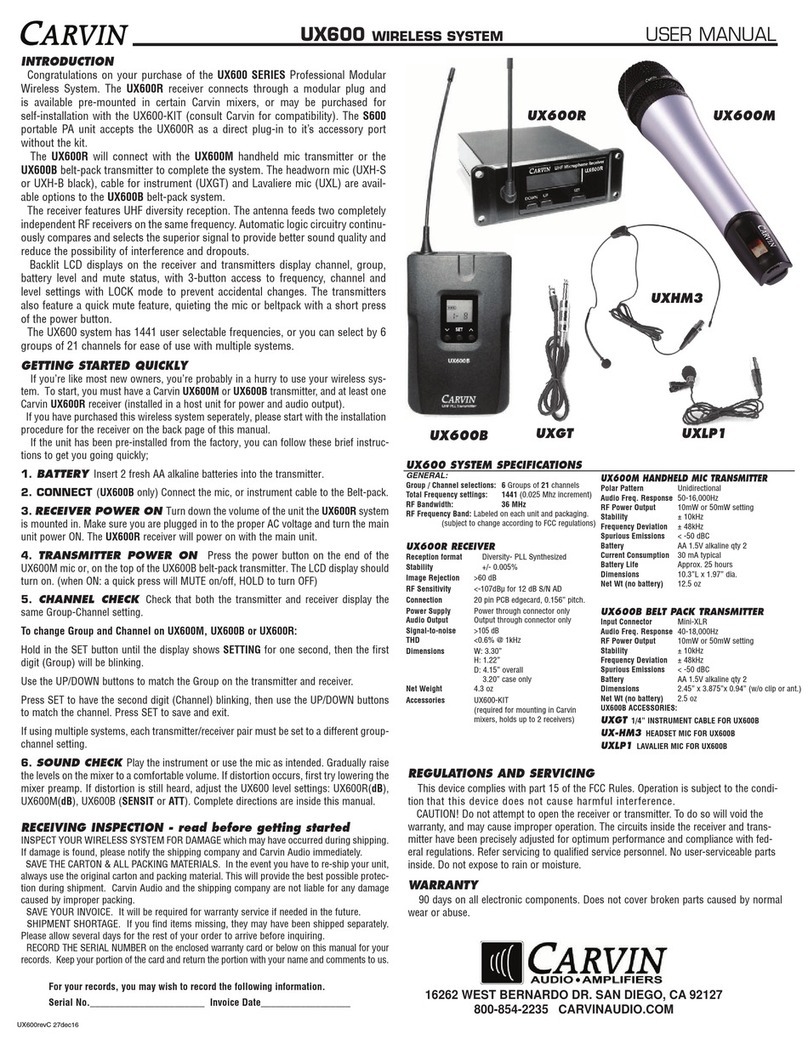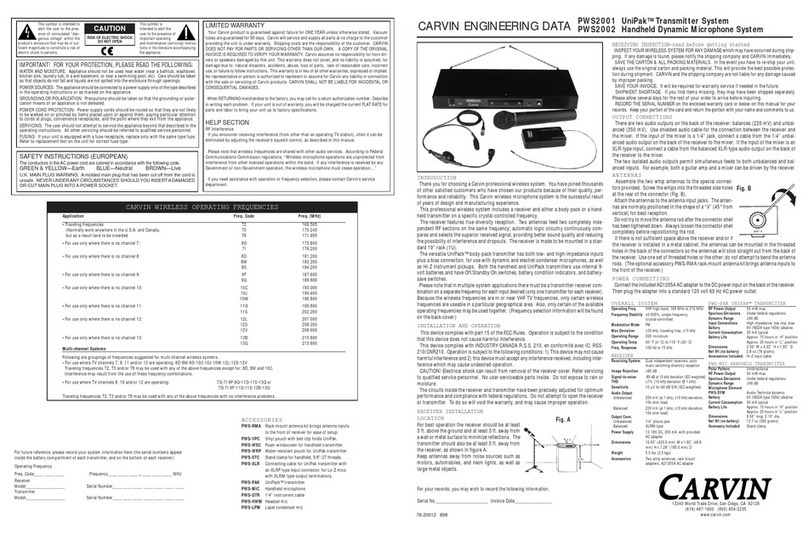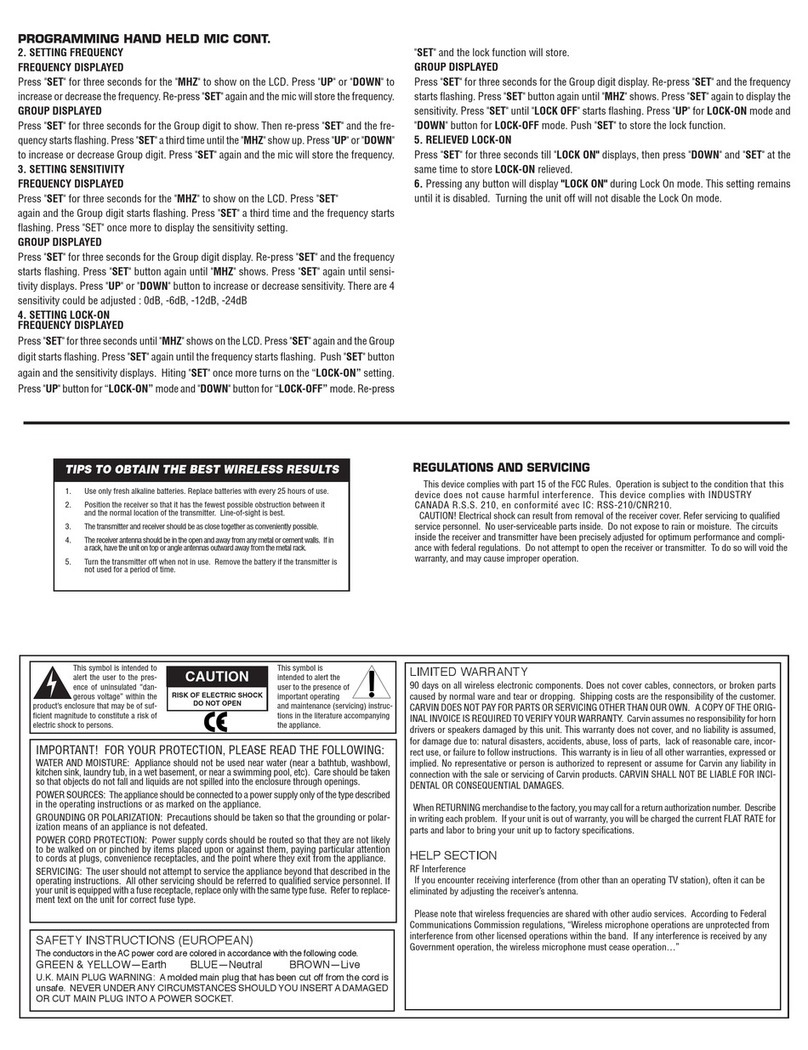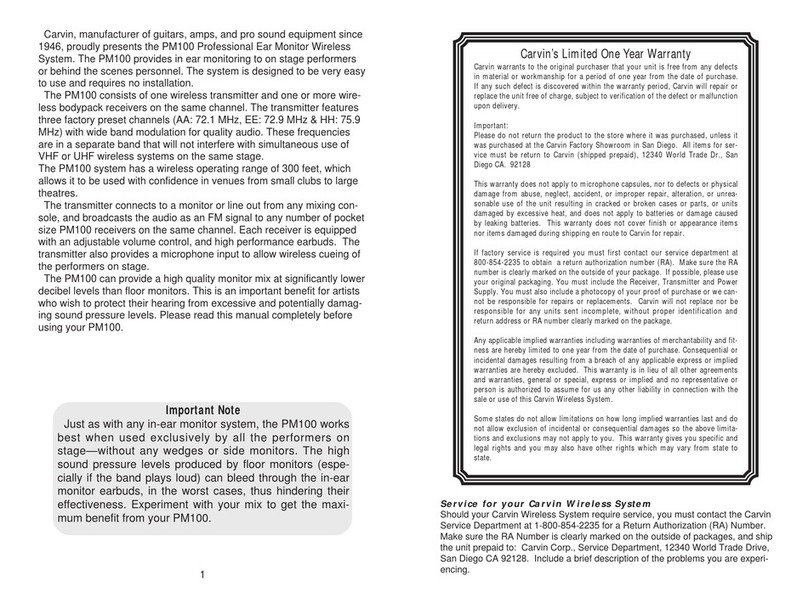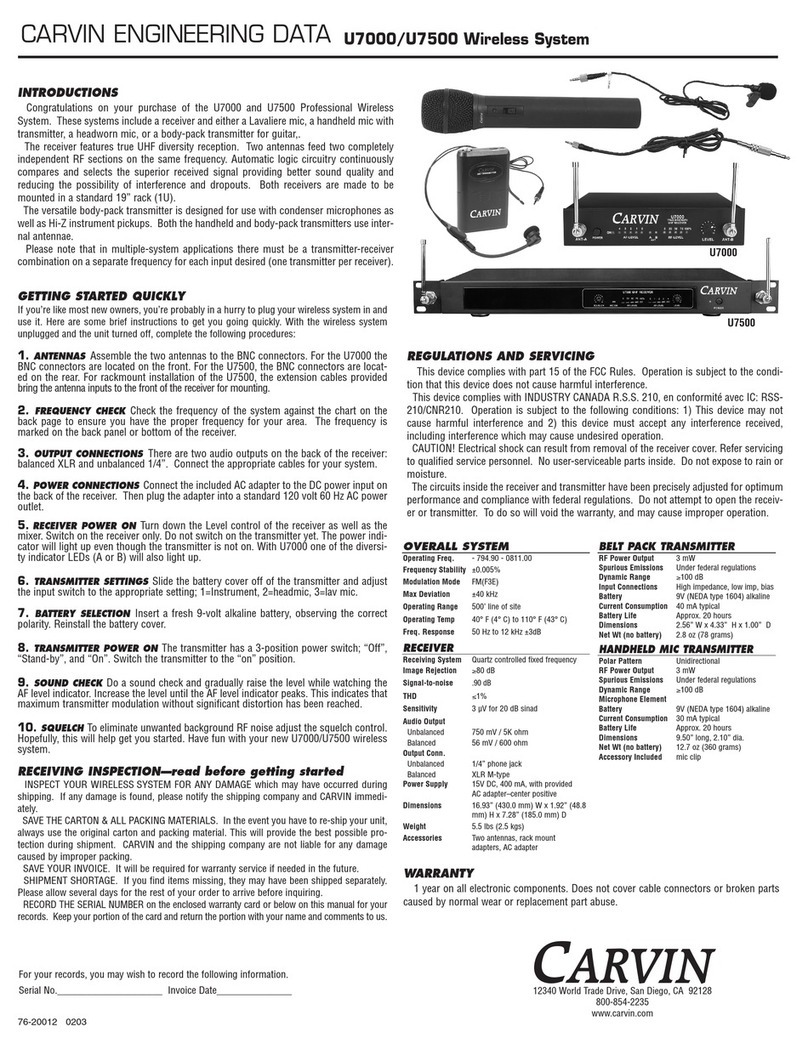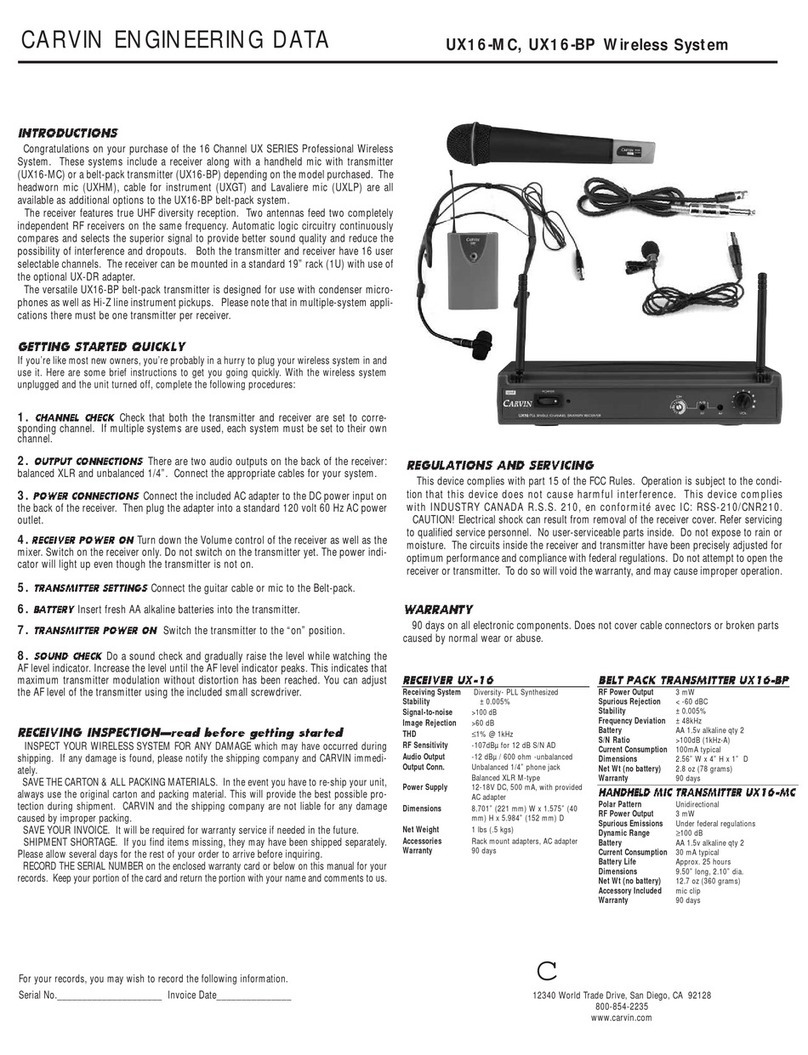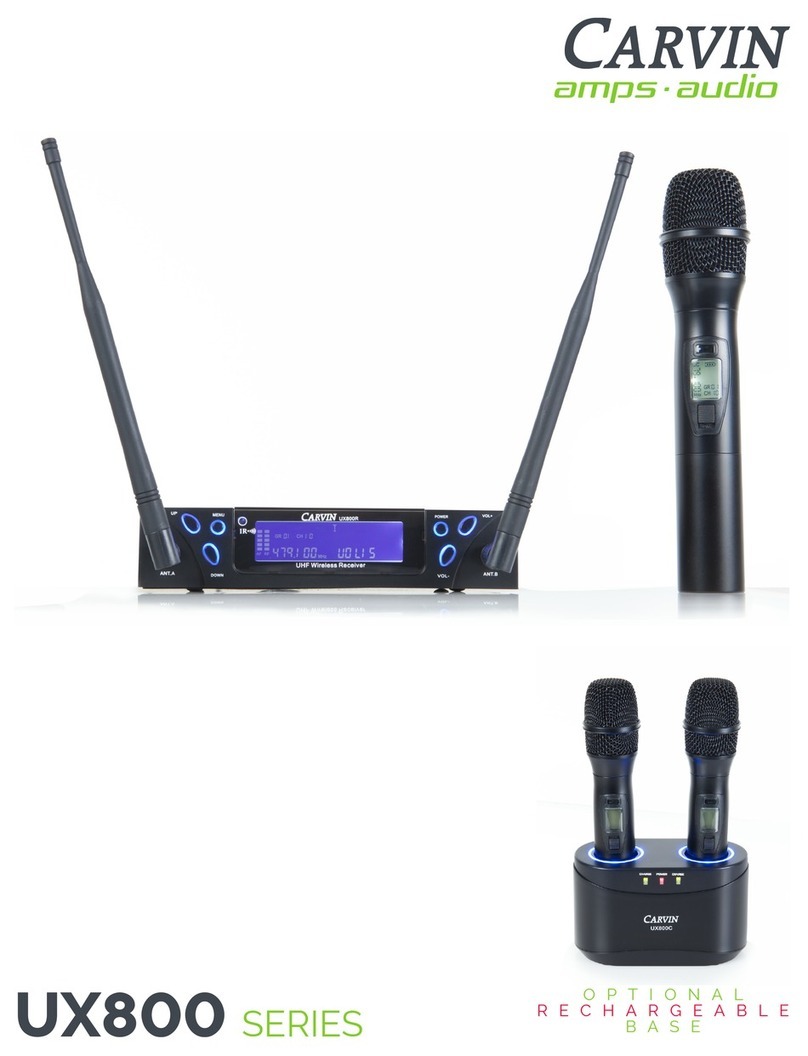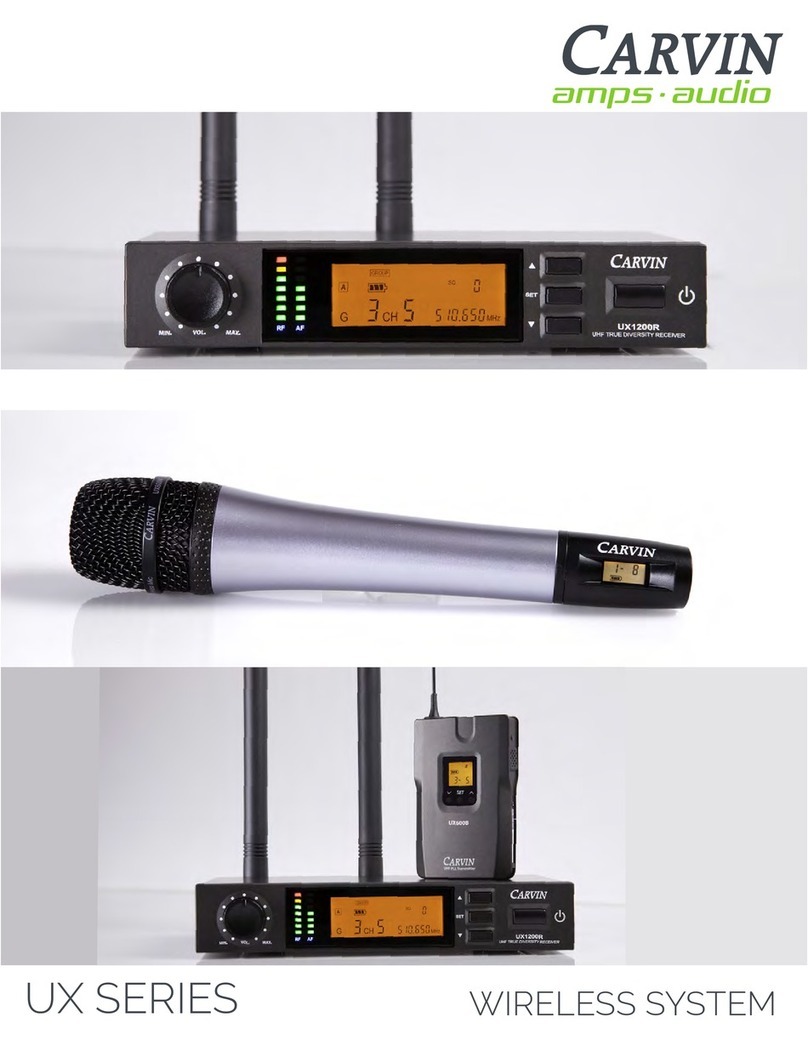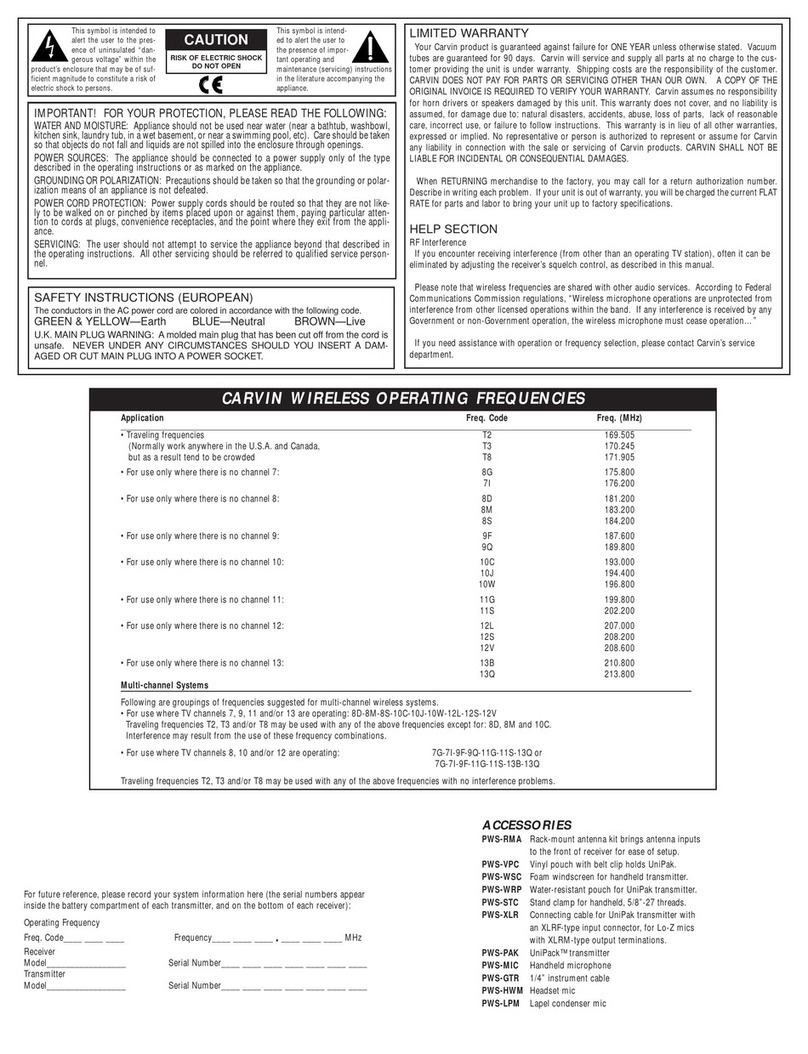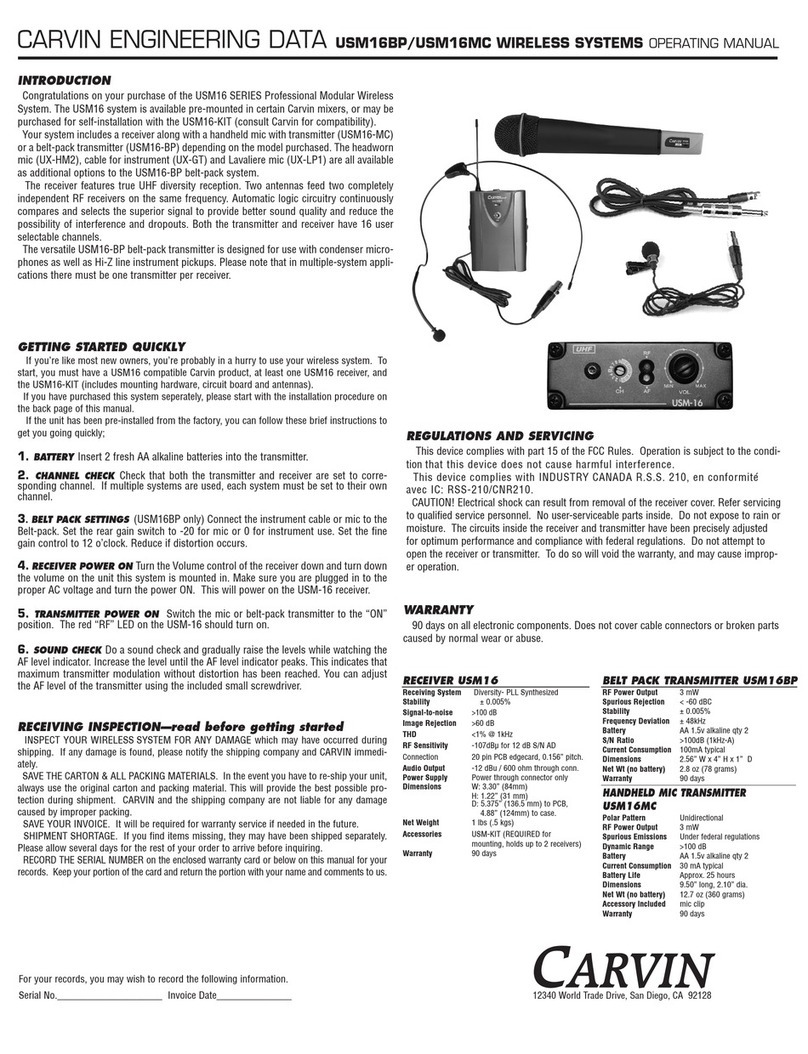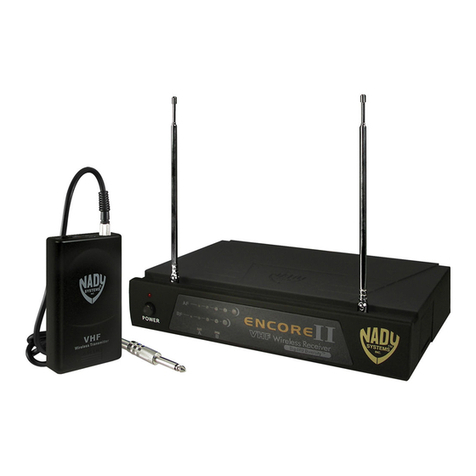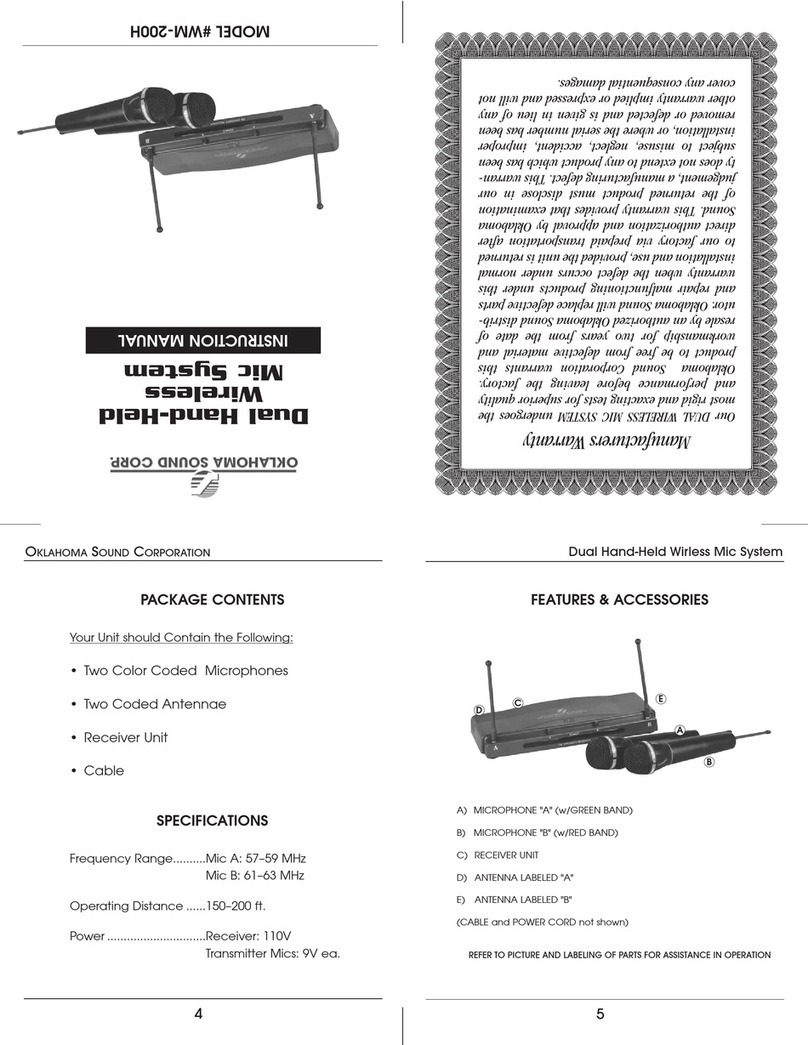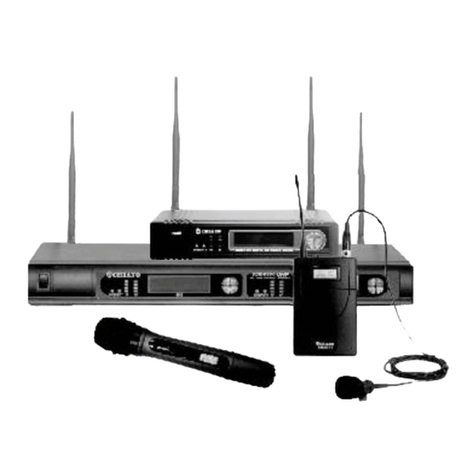1. Unscrew the BATTERY COMPARTMENT COVER (19) and remove, exposing the BAT-
TERY HOLDER (20). Insert a fresh 9V ALKALINE BATTERY (21), observing the cor-
rect polarity as marked, and screw the cover back on to the microphone. Make sure
the cover is screwed on completely. A fresh alkaline battery can last up to 10 hours in
use, but in order to ensure optimum performance, it is recommended that you
replace the battery after every 7-8 hours of use.
2. Turn on the UH-10 by sliding the OFF/STANDBY/ON SWITCH (22) to the STANDBY
position (transmitter on, audio muted) or the ON position (transmitter and audio both
on). The BATTERY INDICATOR LED (23) will give a single quick flash, indicating
usable battery strength. In the case of a dead or low battery, the LED will either not
go on at all or will stay on continuously, indicating that the battery should be replaced
with a fresh one. To preserve battery life, turn the transmitter off when not in use.
3. The microphone is now ready to use. The A and/or B DIVERSITY LED INDICATORS
(2) on the receiver should now be lit, indicating a received signal from the transmit-
ter. When ready to speak, slide the transmitter switch to the ON position. Adjust the
volume of the receiver as per the Audio Output Microphone Connection section of the
above receiver instructions.
[Note: Observe care in selecting P.A. volume, transmitter
location and speaker placement so that acoustic feedback (howling or screeching)
will be avoided.]
1. Slide open the hinged BATTERY COMPARTMENT (18) and insert a fresh 9V ALKALINE
BATTERY (19), observing the correct polarity. A fresh alkaline battery can last up to 10
hours in use, but in order to ensure optimum performance, it is recommended that
the battery be replaced after 7-8 hours of use.
2. The Bodypack Transmitter is equipped with an INPUT SELECTOR SWITCH (20) in the
battery compartment for selecting the type of audio input you will be supplying to the
transmitter. Select from the choice of three positions: INSTRUMENT (for guitar, bass,
etc.)/ LAVALIER MIC.
3. The Bodypack Transmitter is provided with a 3.5 mm LOCKING JACK (21) for con-
necting the audio input selected. Connect either the INSTRUMENT CORD (22) or
LAVALIER MIC CORD (24) as desired, according to the input selected.
(Note: Use only
the input audio source as per the input selected with the AUDIO INPUT SELECTOR
SWITCH or the audio will not be optimal–a muddy or distorted sound may result.) To
secure the connection, turn the slip ring on the plug clockwise to thread it on the jack.
To unplug, reverse the process. Slip the transmitter into a pocket or use CLIP (28) to
attach it to your clothes or instrument strap (if using as an instrument transmitter).
4. Turn on the Bodypack Transmitter by sliding the OFF/STANDBY/ON SWITCH (25) to
the STANDBY position (transmitter on, audio muted) or the ON position (transmitter
and audio both on). The BATTERY INDICATOR LED (26) will give a single quick flash,
indicating usable battery strength. In the case of a dead or low battery, the LED either
will not go on at all or will stay on continuously, indicating that the battery should be
replaced with a fresh one. To preserve battery life, turn the transmitter off when not
in use. The transmitter is now ready to use. The A and/or B DIVERSITY LED INDICA-
TORS (2) on the receiver should now be lit, indicating a received signal from the
transmitter.
5. Instrument Use
Plug the 1/4" phone plug from the INSTRUMENT CORD (22) into the instrument. As
the cord to the instrument also serves as the antenna, be sure to extend it fully for
maximum range. Rolling up or shortening the cord may reduce the effective operating
range. When ready to play, slide the audio OFF/STANDBY/ON SWITCH (25) to the ON
position. Adjust the volume of the receiver as per the Audio Output Instrument
Connections section of the above receiver instructions. For optimum performance, an
INPUT LEVEL CONTROL (27) is provided on the top panel of the Bodypack transmit-
tert. Adjust the gain by turning the control with your thumb. For instrument use, it is
recommended that this control be turned to maximum gain. However, for ultra high-
gain instrument sources such as active bass pickups or even extra hot guitar pickups,
turning the level down slightly will create a cleaner sound.
(Note: Turning down the
input gain too much can compromise the signal-to-noise ratio and is not recommend-
ed. Set for the maximum possible gain and headroom without noticeable distortion on
the high level peaks).
HANDHELD MICROPHONE BODYPACK TRANSMITTER
19. BATTERY COMPARTMENT COVER
20. BATTERY HOLDER
21. 9V ALKALINE BATTERY
22. OFF/STANDBY/ON SWITCH
23. BATTERY INDICATOR LED
21
20
19
23
22
20
67
